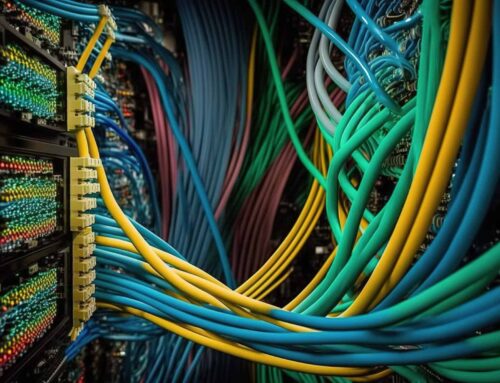Managing utility costs without acting like Ebenezer Scrooge

In the first chapter of Charles Dicken’s A Christmas Carol the author describes Ebenezer Scrooge as a man who permits his employee, Bob Cratchit, a fire with only a single lump of burning coal in it, and to make matters worse Mr. Scrooge keeps the coal scuttle in his office, threatening to fire Bob if he asks for more coal. One can imagine a modern-day Mr. Scrooge eyeing the office temperature from his smartphone, waiting to correct any fluctuations to minimize the utility cost per square foot.
It’s an over-dramatic and overly simple picture of what companies face when managing their utility costs. The goal is to use exactly the right amount of water, electricity, and gas to keep the business running and the employees comfortable so they can focus on productivity. It’s hard to imagine a company that would fire an employee for asking to turn up the thermostat, but the amount of money a single company loses every year to inefficient utility management amounts to tens, and often hundreds, of thousands of dollars — a salary’s worth on the low side. In fact, energy costs account for 20% of the average office building’s costs.
The good news about this dilemma is that it doesn’t demand hard choices between headcount and heating (or cooling) bills — it requires careful optimization and the strategic application of automation technology.
Comparing Energy Usage
First, you need a benchmark to compare your current costs, usually measured in dollars per square foot (PSF), which you calculate by dividing your monthly utility cost by the total square footage of real estate serviced. For example, in 2018, private-sector office buildings reported a utility cost of $2.14 PSF.
The numbers for commercial buildings also vary by region, illustrated by the U.S. Energy Information Administration’s map. It’s important to compare your utility costs to similar businesses operating in comparable regions.
Houston Utility Cost Per Square Foot
Utility usage varies a lot depending on the type of commercial property and by state or region. However, we can outline the average cost of utilities in Houston, our hometown, to provide a better understanding of expected costs.
It won’t come as a surprise to anyone reading this from Houston, but this city can get hot. Electricity is typically the most expensive utility for any business or commercial space, and while Texas does benefit from deregulated electricity (at least in terms of cost), the Houston heat results in some high summer utility costs. The average Houston commercial electricity rate, as of June 2021, is 10.5 centers per kWh. This is is about 4% lower than the national average.
Industrial natural gas rates are also typically cheaper in Houston. As of March 2021, the average cost of industrial natural gas (per thousand cubic feet) was $3.04 – which was 30.4% less than the national average.
Houston bills for water at two different rates – a rate for your first 2,000 gallons and then a lower rate after that amount. The commercial price for water under 2,000 gallons is $13.24. After that, water is billed at $6.62 per 1,000 gallons.
There Are Many Ways To Reduce Utility Costs
You probably aren’t counting your “negawatts.”
Negawatts is a term that refers to power saved through conservation or improved efficiency. In much the same way that negative numbers cancel out positive ones, negawatts counteract your energy consumption. It’s a memorable way to label and measure the effects of reducing energy consumption. There are at least two approaches to increasing your negawatts.
Tune-ups
Especially if your heating and cooling equipment is older, it’s important to run HVAC diagnostics to look for ways to optimize your boiler and chiller units. You can also look into upgrading the building management system’s software. System tune-ups rarely require heavy investment and can pay for themselves in under 24 months.
Retrofits
Once you’ve established your utility cost per square foot, and measured the ratio of how much each system contributes to your overall cost you can begin evaluating retrofitting individual components. By comparing the efficiency of newer equipment you can even estimate the payback period for such upgrades — a 20-50% improvement in efficiency can add up fast.
Building Automation Can Unlock Huge Utility Savings
If you’re Mr. Scrooge deciding how much coal you need to heat a one-room counting-house, you don’t need fancy sensors. But virtually every single modern business can benefit from installing a building automation system that ties together smart appliances, lighting, sensors, and human occupancy traffic.
By monitoring demand and usage you can identify the times of day when it’s ideal to let water heaters idle, lighting to dim, and the HVAC system to ease off. When you need electricity greatly affects how much it costs, usually represented as a “demand charge” on your utility bill. If you can shift usage away from high-demand times or cut overall usage, you’ll see the gains to your bottom line very quickly.
While you may not be in the market to construct a fully integrated smart building, there are plenty of ways to upgrade a structure using Internet-of-Things (IoT) devices and a centralized monitoring dashboard to save big. Ideally, you will even be able to monitor the duty cycles of your equipment, enabling planned maintenance periods instead of waiting until the equipment fails — another benefit that saves you money.
On-Site Renewables And Storage Can Be Game-Changers
Whatever your stance on the environmental benefits of renewable electricity, it’s impossible to ignore the ways that renewable energy can help you manage your utility usage and save money.
At a basic level, installing a renewable energy system such as photovoltaic panels and battery storage can allow you to offset power usage during peak times (again by reducing those “demand charges”). Best of all, you remove the need to “load-shed” (i.e. look for ways to simply reduce power consumption, either voluntarily or by requirement).
If you’re under the impression that these kinds of solutions are either vanity projects or too expensive and small-scale to matter, you will be pleasantly surprised. Falling manufacturing costs for photovoltaics and batteries, combined with significant gains in photovoltaic efficiency have turned them into powerful tools for managing energy costs.
Consider Contracting With Off-Site Renewable Energy Providers
Last but not least you should also consult with renewable energy developers. By locking in contracts ahead of time these developers can more easily finance the construction of new capacity, and they’re willing to offer competitive rates without the volatility of fuel prices (the sun costs the same all year round).
Effective Energy Management Is Better For Everyone
If implemented with consideration and an eye towards long-term gains, an energy management plan will save you money, keep your employees productive, and can largely be something that once automated, requires very little ongoing attention.
About i.e.Smart Systems
i.e.Smart Systems is a Houston, TX based technology integration partner that specializes in design and installation of audio/visual technology and structured cabling. For more than three decades, our team of in-house experts has partnered with business owners, architectural firms, general contractors, construction managers, real estate developers, and designers in the Houston market, to deliver reliable, scalable solutions that align with their unique goals.




